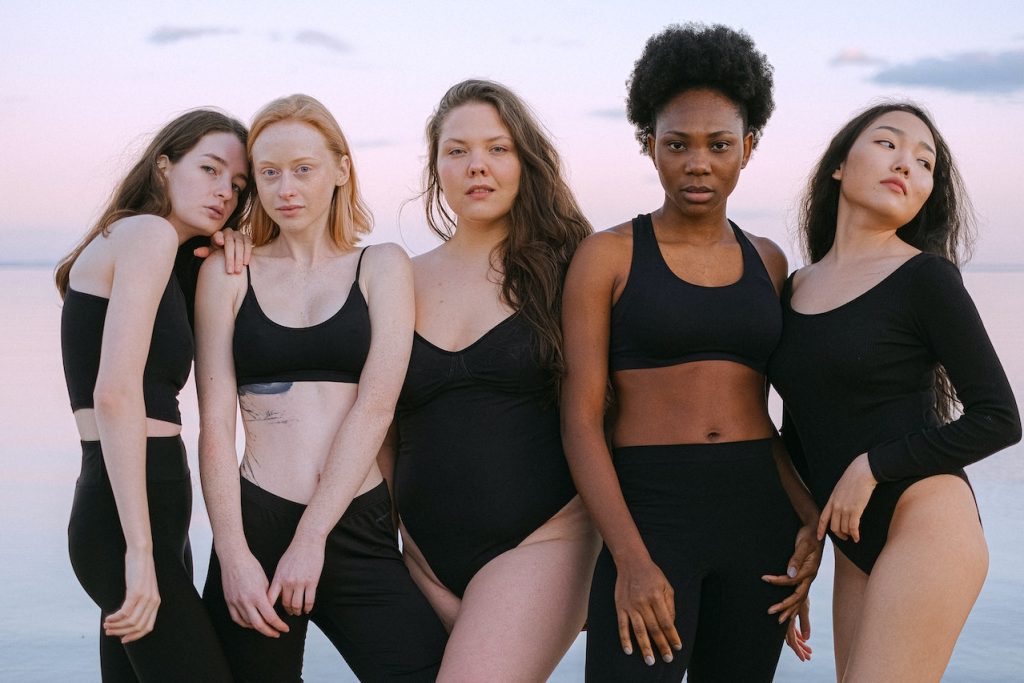In fashion, “putting together” an outfit relates not only to the various pieces of clothing used in an ensemble, but also to the different elements which make up a sense of personal style. While some of these (such as body measurements) are easy to gauge, others are more subjective.
Personal style also encompasses a wide range of subjective factors: from cultural influences to color to comfort, but as a foundation to all of this, one of the best places to start is by looking at body typology.
Arguably the best-known methods of body typing are the traditional body shape method, which relies on measurements (tools like this body type calculator can help with this), and the Kibbe system, which looks at aspects of the face and body in relation to the Chinese philosophy of yin and yang.
Table of Contents
The Body Shape Method
Body shape dressing was influenced by a study in the early 2000s which found that while women’s bodies were changing, the fashion industry was still producing clothes primarily designed for hourglass-type bodies, comprising just 8% of participants.
The four resulting categories (hourglass, rectangle, spoon and inverted triangle) were later expanded to include fruit (apples, pears, bananas) and even household objects such as vases, goblets and bricks, as seen in makeover TV shows of the era.
The Kibbe Method
The Kibbe method (originally developed by David Kibbe in the 1980s) has five main categories ranging from most yin to most yang: romantic, gamine, classic, natural and dramatic, with eight subcategories in between combining the main types.
Rather than measurements, the Kibbe method relies on body and facial proportions related to features such as musculoskeletal structure and specific facial features. These are measured in terms of softness or angularity (sharpness), with the idea that wearing contrasting shapes and fabrics can help achieve a sense of visual balance.
A Problematic History
Many modern methods of body typing are rooted in William Sheldon’s somatotype work of the 1940s, which suggested a link between physical characteristics and positive or negative personality traits, theories which have thankfully been discredited.
Modern body typing has also come under scrutiny for objectifying women, perpetuating body image issues and for lacking diversity (Kibbe reference images are predominantly Eurocentric).
Elsewhere, labeling the hourglass figure as “ideal”excludes the other 92% of body types while suggesting that the main reason for getting dressed is to attract a male partner, based on the (disputable) evolutionary theory that a waist-to-hip ratio of 0.7 suggests good health and fertility.
Fashion Evolution
While dressing to attract isn’t inherently negative, it’s also not the only component of personal style. More recently, changes in gender and body inclusivity suggest a shift in attitudes towards dress. Rather than an unwavering adherence to trends and rules, this approach offers a more holistic approach to personal style embracing all its aspects.
Much like fashion itself, personal style is a creative process where rules are also made to be broken. This can be seen in the recent trend for “dopamine dressing”, or wearing clothing that evokes a sense of joy. Away from the body-shaming rhetoric of the nineties and early 2000s, body typing has had a makeover as a framework for developing personal style and creative self expression celebrating our many unique facets.

